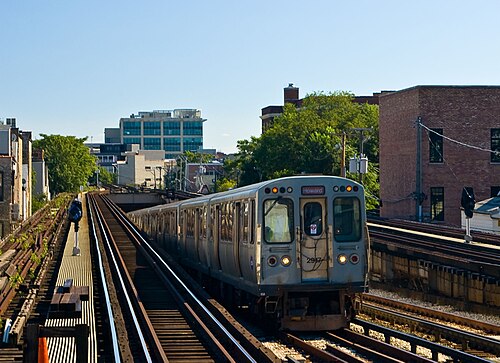This article relies largely or entirely on a single source .(June 2023) |
WILLOW 1800N 1000W | |||||||||||
|---|---|---|---|---|---|---|---|---|---|---|---|
 The former site of the Willow station, now a portal to the State Street subway | |||||||||||
| General information | |||||||||||
| Location | 940-44 W. Willow St. Chicago, Illinois | ||||||||||
| Coordinates | 41°54′52″N87°39′09″W / 41.9145°N 87.6525°W | ||||||||||
| Owned by | Chicago Rapid Transit Company | ||||||||||
| Line | North Side Main Line | ||||||||||
| Platforms | 2 side platforms | ||||||||||
| Tracks | 4 tracks (2 express) | ||||||||||
| Construction | |||||||||||
| Structure type | Elevated | ||||||||||
| History | |||||||||||
| Opened | 1905 | ||||||||||
| Closed | May 17, 1942 | ||||||||||
| Former services | |||||||||||
| |||||||||||
| |||||||||||
Willow was a station on the Chicago Rapid Transit Company's North Side Main Line, which is now part of the Chicago Transit Authority's Brown Line. The station was located at 940-44 W. Willow Street in the Lincoln Park neighborhood of Chicago. Willow was situated south of Armitage and north of Halsted, which is now closed. Willow opened in 1905 and closed on May 17, 1942, to allow for the construction of a new portal to the State Street subway. [1]
